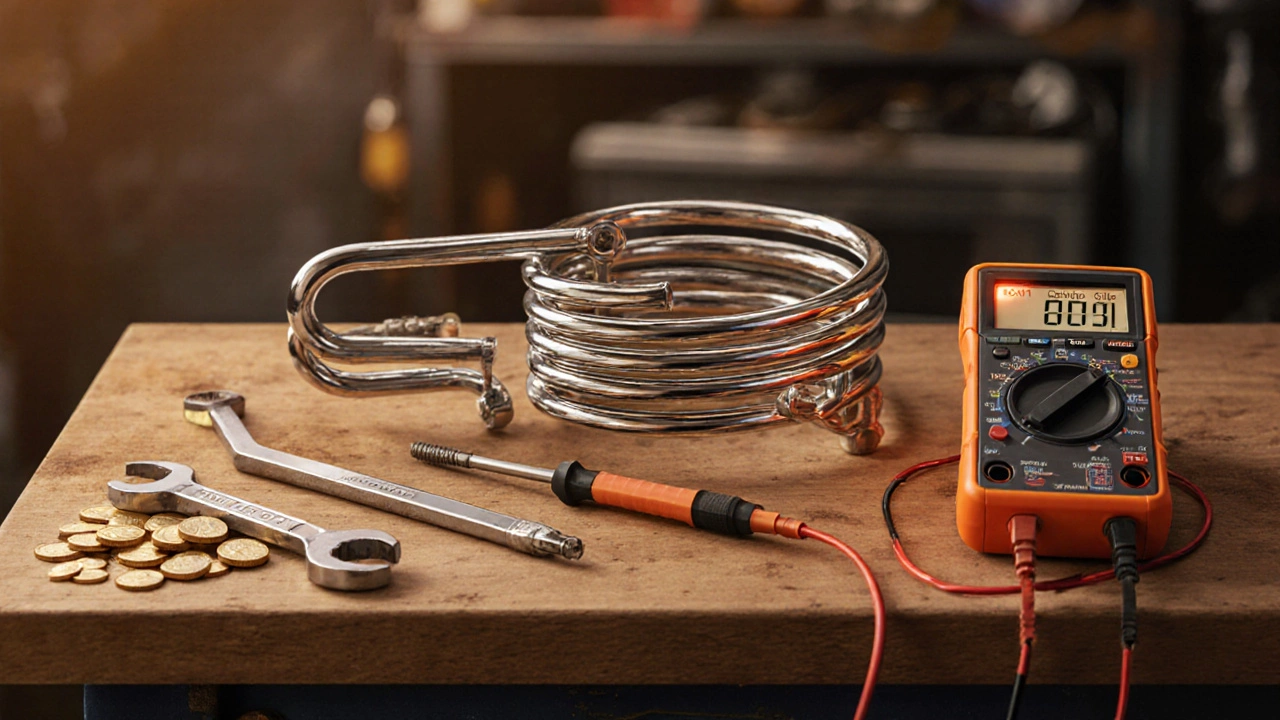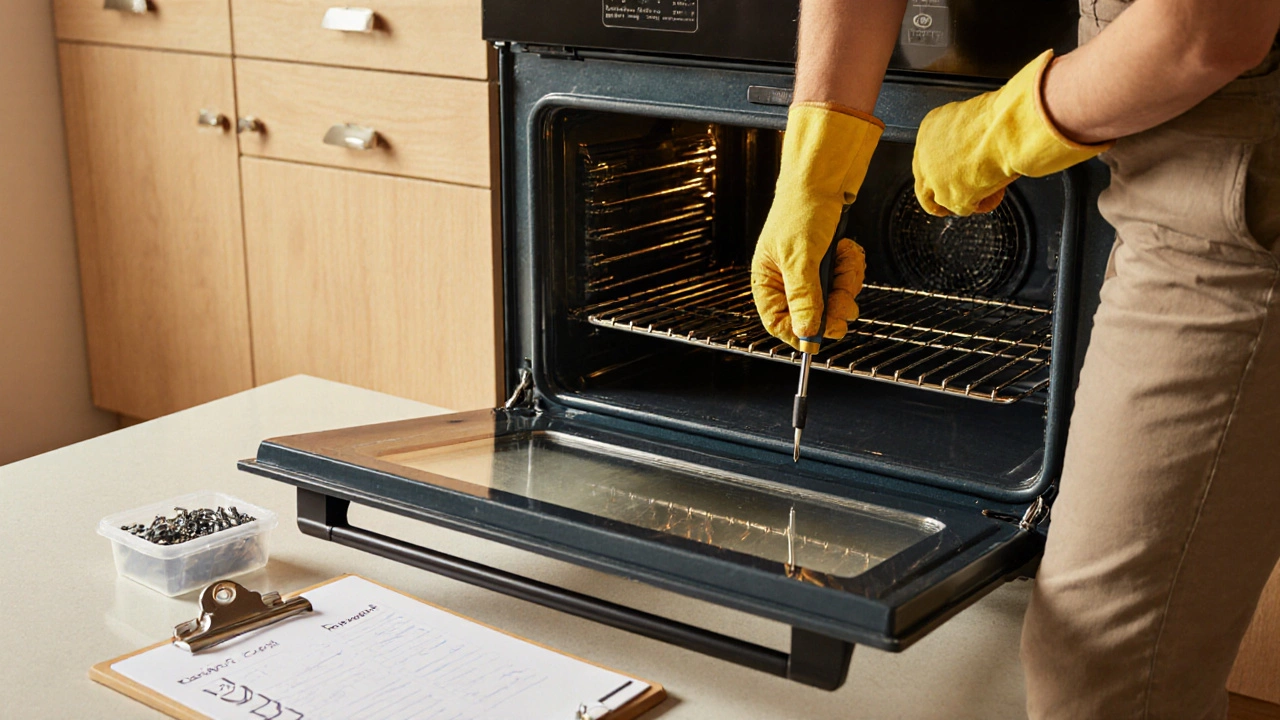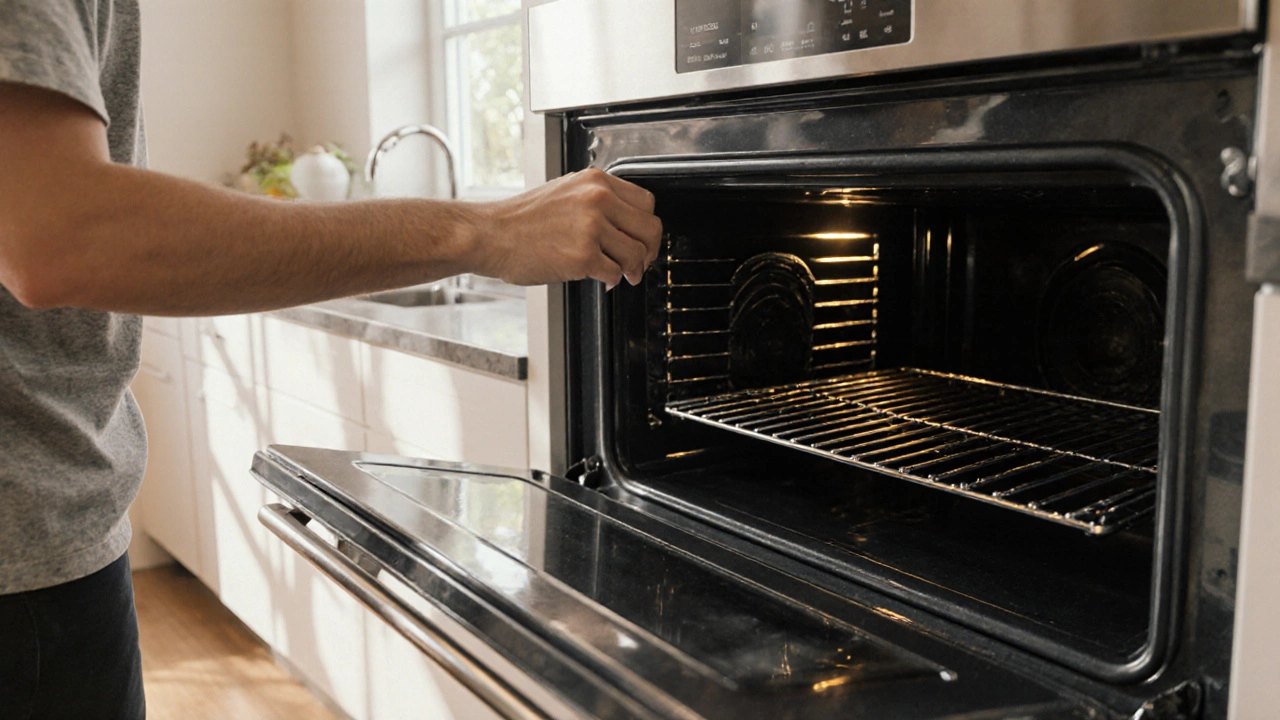Oven Heating Element Cost Calculator
Cost Estimate
Get a personalized estimate for your oven heating element replacement.
Estimated Cost
$0.00
Tip: Always check your warranty before DIY repair.
Ever opened the oven door only to find a cold, dead space where the heat should be? You're not alone-many homeowners hit that snag and wonder how much it will set them back. Below you’ll get a straight‑up look at the price‑tags that pop up when you need to replace an oven heating element, plus tips on getting the best value.
What Exactly Is an Oven Heating Element?
Oven heating element is a metal coil or tube that converts electricity into radiant heat inside an electric oven. It sits at the bottom (sometimes the top) of the oven cavity and is the workhorse that bakes, broils, and roasts. When the element fails, the oven may stay cool, heat unevenly, or give intermittent temperature spikes.
How Do You Know the Element Needs Replacing?
- Temperature‑reading errors on the oven display.
- Visible black spots, cracks, or a burnt smell coming from the coil.
- Food takes longer to cook than the recipe says.
- The oven works fine on the lower rack but stays cool on the upper rack (often a sign of a burnt top element).
If you spot any of these, it’s time to start budgeting for a fix.
Key Factors That Influence the Price
Costs don’t come from a single source. Here’s what usually moves the numbers up or down:
- Oven type - A standard single‑cavity electric oven costs less to service than a dual‑cavity or convection model.
- Part brand - OEM part is a genuine component made by the oven’s original manufacturer. Those run 20‑30% higher than aftermarket part which is made by third‑party suppliers.
- Labor rates - Repair technician charges an hourly fee that varies by region, experience level, and whether the service is through a franchise. In major metros you’ll see $80‑$120 per hour; in smaller towns it can drop to $50‑$70.
- Location - Transportation fees, local tax rates, and the cost of living all affect the final quote.
- Warranty status - If your oven is still under a manufacturer’s warranty, the part may be free (you just cover labor).
Typical Price Breakdown
| Cost Component | Low End | Mid Range | High End |
|---|---|---|---|
| OEM heating element | $45 | $75 | $120 |
| Aftermarket heating element | $30 | $55 | $80 |
| Labor (1‑2 hrs) | $50 | $95 | $150 |
| Travel/diagnostic fee | $0 | $25 | $40 |
| Total (average) | $85 | $165 | $290 |
That total column reflects the oven heating element replacement cost most homeowners encounter: $85 on the cheap side up to about $290 if you opt for premium parts and a top‑tier service.
DIY vs. Professional Installation: Quick Comparison
| Factor | DIY | Professional |
|---|---|---|
| Initial cost | Part only ($30‑$120) | Part + labor ($85‑$290) |
| Time required | 1‑2 hours (plus prep) | 30‑90 minutes on site |
| Risk of damage | Higher if you’re unfamiliar with wiring | Low - tech follows safety protocols |
| Warranty impact | May void OEM warranty | Works with existing warranty |
| Tools needed | Screwdriver set, multimeter, safety gloves | All tools supplied by the service |
If you’re comfortable handling basic electrical parts, DIY can shave $50‑$150 off the bill. But a mistake can cost more in the long run, especially if you damage the oven’s wiring or void the warranty.

How to Get an Accurate Quote
- Know your oven’s model number (usually stuck on the frame or door).
- Check whether the warranty is still active.
- Call at least three local repair shops and ask for a breakdown of parts vs. labor.
- Ask if the quoted price includes a diagnostic fee. Some shops waive that fee if you proceed with the repair.
- When you request a quote, specify whether you want an OEM part or an aftermarket part. The price gap can be significant.
Common Pitfalls and How to Avoid Them
- Skipping the thermostat check. A failing thermostat can mimic a dead element. Verify the thermostat’s continuity with a multimeter before ordering a new coil.
- Buying the wrong size. Elements come in different lengths and wattages. Use the oven’s service manual or the part number printed on the old coil.
- Ignoring safety. Always unplug the oven and turn off the circuit breaker. Even a “low‑voltage” oven can deliver a painful shock.
- Overlooking the protective glass. Some models have a heat‑shield glass that must be removed to access the element. Breaking it adds unnecessary cost.
- Choosing the cheapest labor. Extremely low rates may mean the tech is unqualified or will cut corners, leading to repeat repairs.
Quick Pre‑Call Checklist
- Model number and serial number written down.
- Age of the oven (if >10 years, consider a full‑service quote).
- Warranty documentation on hand.
- List of observed symptoms (error codes, uneven heating, smells).
- Decision on OEM vs. aftermarket part.
Having this info ready cuts the phone time and often lets the shop give you a firm price on the spot.
Bottom Line
Replacing an oven heating element generally lands between $85 and $290, depending on part choice, labor rates, and where you live. If you’re handy, the DIY route can shave $50‑$150, but factor in safety, warranty, and the possibility of an extra repair later.

How long does a professional repair usually take?
Most techs finish the swap in 30‑90 minutes once they’ve diagnosed the problem. The total appointment time, including travel, is usually under two hours.
Can I replace the element myself without voiding the warranty?
If the manufacturer’s warranty explicitly states “owner‑service not permitted,” DIY work will void it. Check the warranty booklet; many brands allow DIY for non‑critical parts but not for heating elements.
What’s the difference between an OEM and an aftermarket heating element?
OEM part is manufactured by the oven’s original maker, matching exact specs and often carrying a longer warranty. Aftermarket part is produced by third‑party vendors; it’s usually cheaper but may vary slightly in material quality or fit.
Do I need to replace the thermostat if the element fails?
Not always. If the thermostat still reads correctly, you can keep it. However, many repair techs test the thermostat while they’re in, because a faulty thermostat often shows up alongside a bad element.
Is there a seasonal discount for oven repairs?
Some service companies run promotions in the fall or early spring when demand is lower. It’s worth asking about current specials when you call for a quote.





